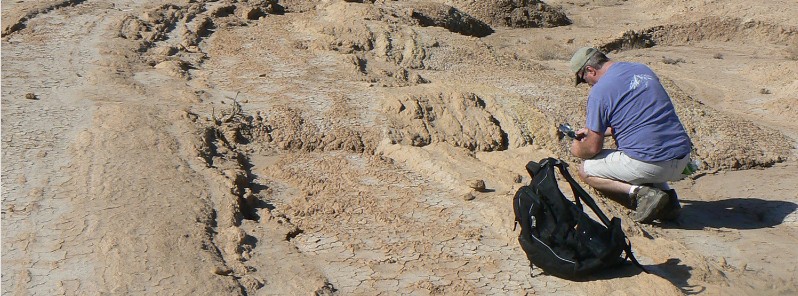New fault line discovered near San Andreas in southern California

Scientists from Scripps Institution of Oceanography and the Nevada Seismological Laboratory have discovered a new, potentially significant fault in southern California. Now named the Salton trough fault (STF), the newly discovered fault runs parallel to the San Andreas Fault, bordering the eastern edge of the Salton Sea in the Colorado Desert.
The southern San Andreas fault (SSAF) accommodates a significant amount of strain between the Pacific and North American plates. Thus, the fault represents a major geohazard to the populated areas of southern California, in particular, the larger Los Angeles metropolitan area, study authors said in the abstract of the paper.
Recent studies have revealed that the region has experienced magnitude-7 earthquakes roughly every 175 to 200 years for the last thousand years. A major rupture on the southern portion of the San Andreas Fault has not occurred in the last 300 years.
A recent active‐source seismic experiment performed in the Salton Sea west of the SSAF provides evidence for extensional deformation along the northeastern shore of the Salton Sea. This study posits that the extensional deformation is due to a previously unmapped fault.
The presence of the newly mapped Salton Trough Fault, which runs parallel to the San Andreas Fault, could impact current seismic hazard models in the earthquake-prone region that includes the greater Los Angeles area. Mapping of earthquake faults provides important information for earthquake rupture and ground-shaking models, which helps protect lives and reduce property loss from these natural hazards. – Scripps
The seismic reflection data image a divergent sediment package that dips toward the northeast with thicknesses up to at least 2 km. Refraction inversion produces a southwestward‐dipping velocity discontinuity that crops out east of the SSAF surface trace, consistent with the existence of a southwest to northeast gradient in lithology.
If present, the existence of the STF has scientific and societal relevance, authors caution.
- First, the STF appears to control the recent Salton trough architecture north of Bombay Beach.
- Second, from a seismological hazards perspective, the presence of this structure could alter the current understanding of stress transfer and rupture dynamics in the region, as well as community fault models and ground‐motion simulations on the SSAF.
Coincidentally, the study was released just after a swarm of over 200 small earthquakes hit Salton Sea in late September 2016.
This remote desert area is shaken by swarms of small to moderate earthquakes that last several days every year and seismologists have long suspected they can trigger movement on other nearby faults, including the San Andreas. The strongest evidence of this occurred in 1987, when a magnitude 6.2 earthquake near the Salton Sea triggered a magnitude 6.6 quake 12 hours later on the Superstition Hills fault to the south.
Reference:
- "Geophysical Evidence for a San Andreas Subparallel Transtensional Fault along the Northeastern Shore of the Salton Sea" – Valerie Sahakian, Annie Kell, Alistair Harding, Neal Driscoll, Graham Kent – October 2016 – GeoScienceWorld – Bulletin of the Seismological Society of America – DOI: 10.1785/0120150350
Featured image: Scripps geologist Neal Driscoll taking measurements of the onshore sediment layers along the eastern edge of the Salton Sea. Credit: Scripps

I hope this helps. Take some of the stress off of the San Andreas fault